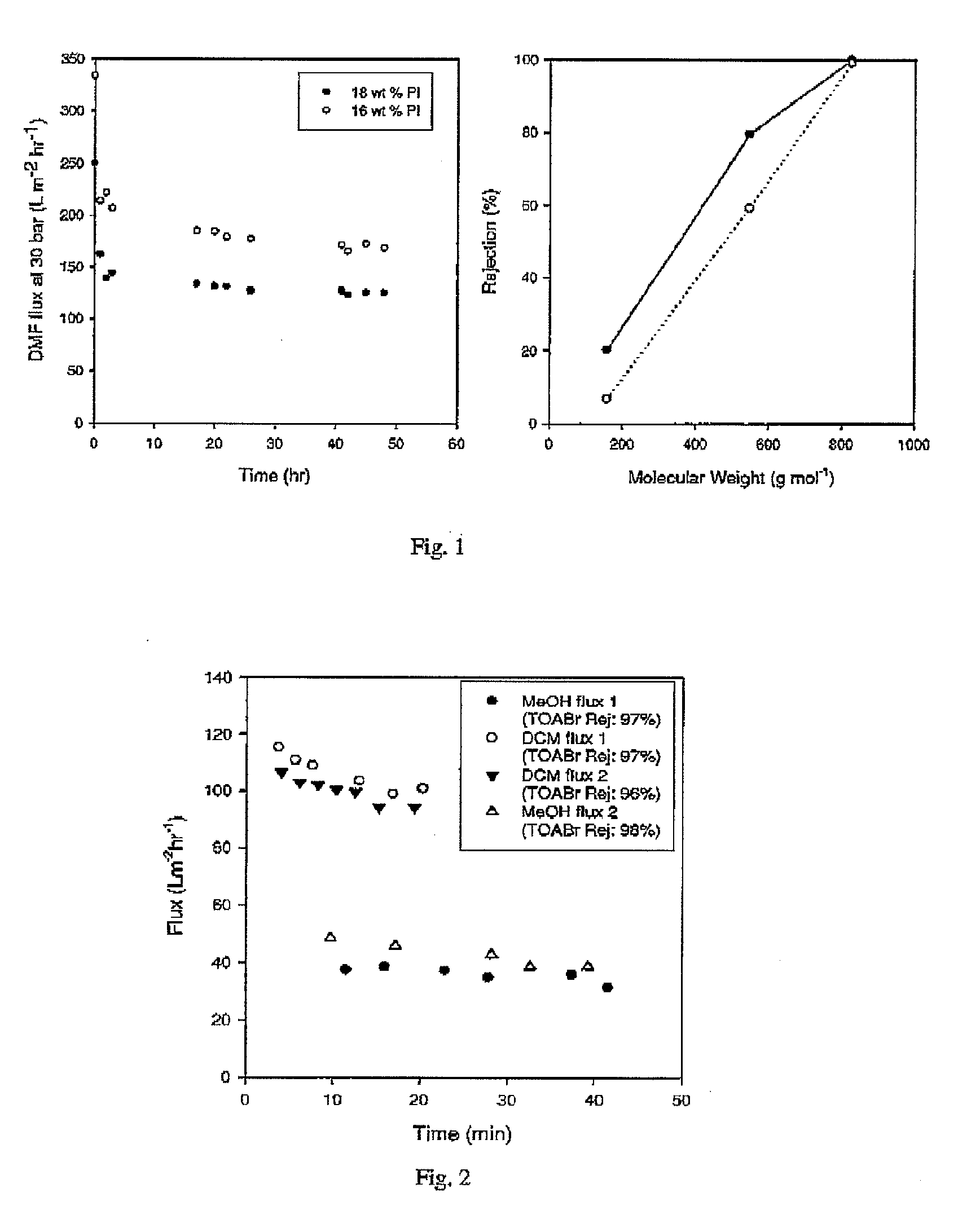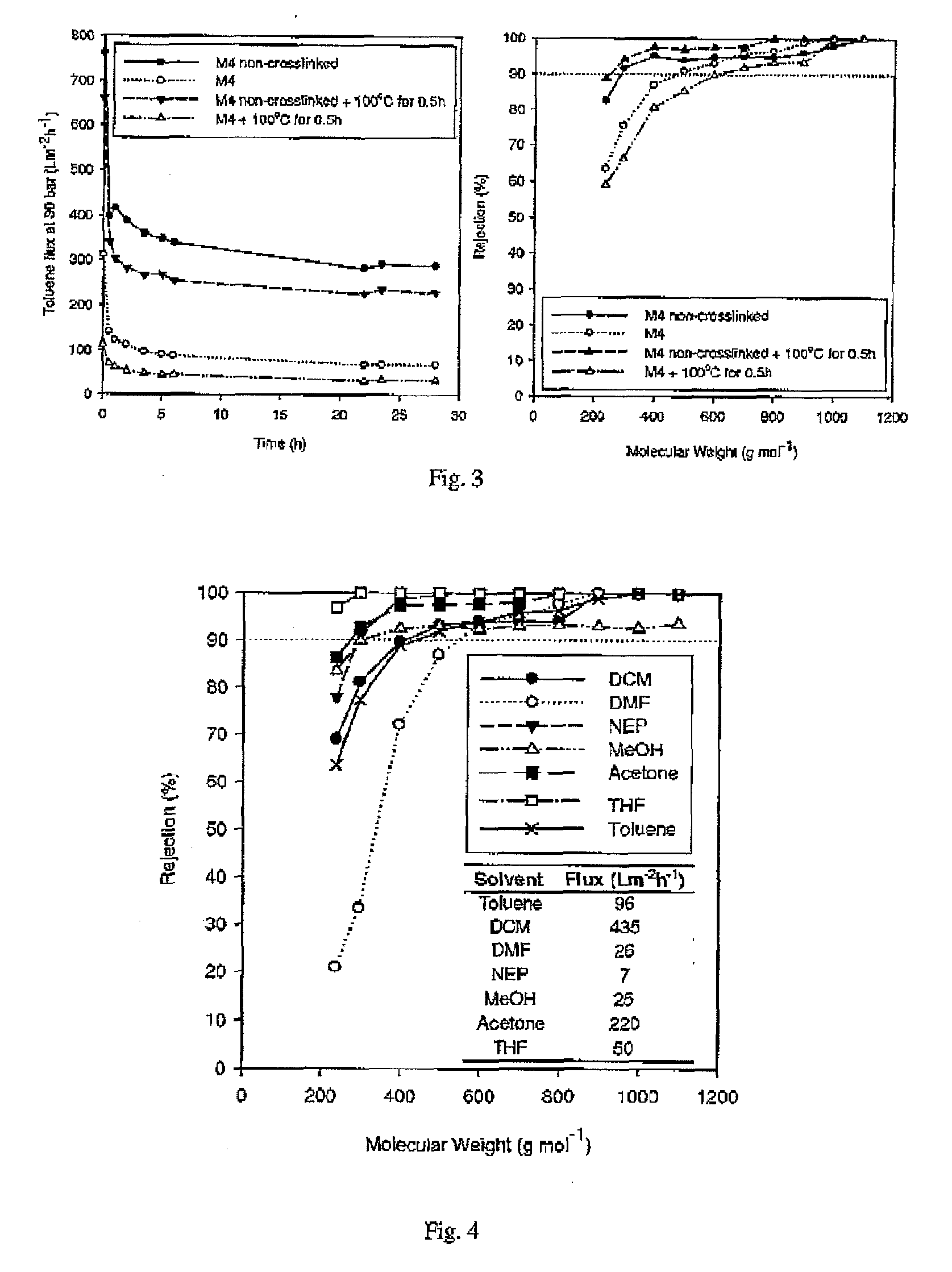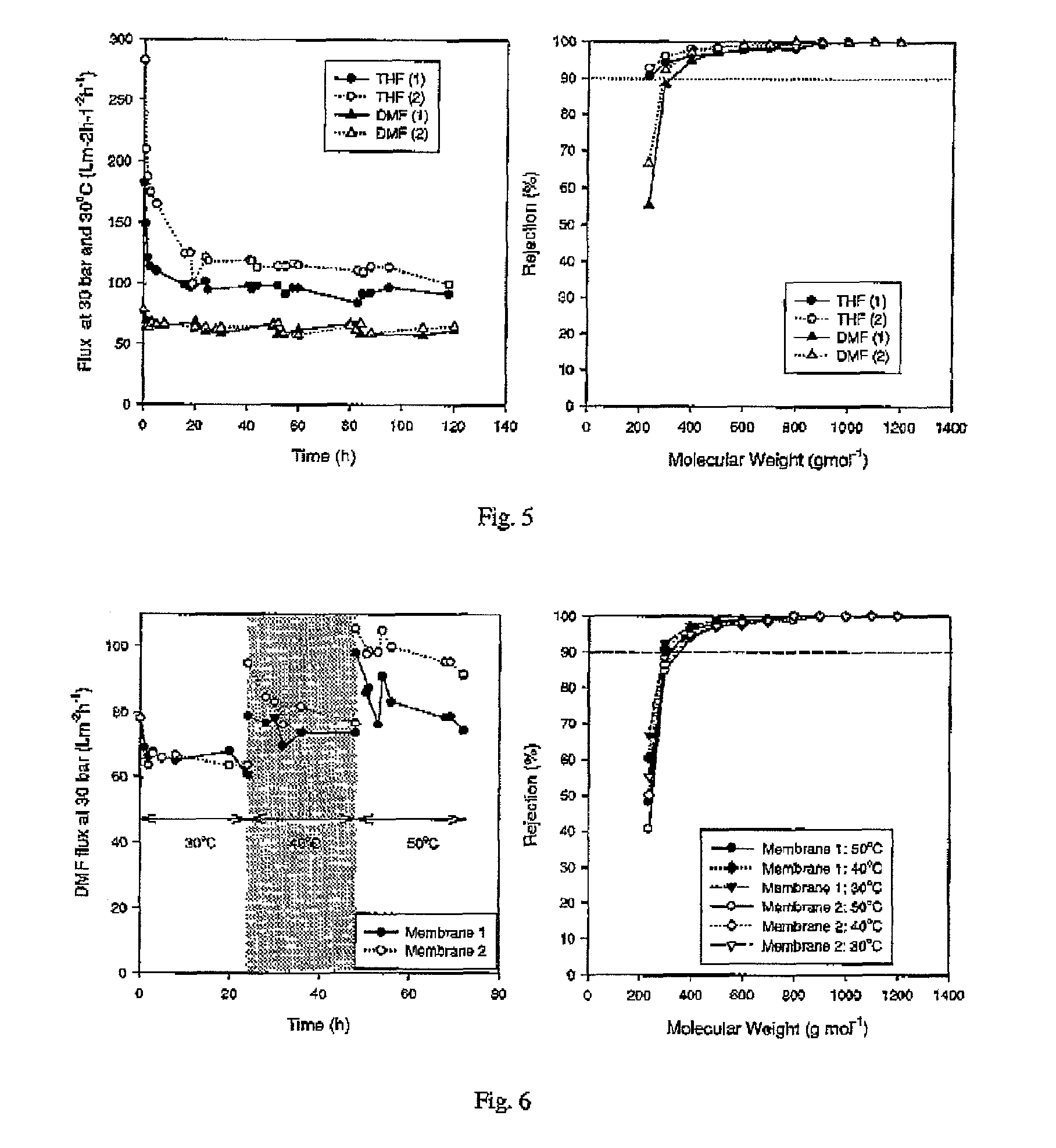Asymmetric membranes for use in nanofiltration
a technology of nanofiltration and membranes, applied in the direction of membranes, filtration separation, separation processes, etc., can solve the problems of not being widely applied to the separation of solutes in organic solvents, the polyimide membrane formed in this way from phase inversion is not stable in all solvents, and the solute separation has not been widely applied. , to achieve the effect of low or no flux and higher flux
- Summary
- Abstract
- Description
- Claims
- Application Information
AI Technical Summary
Benefits of technology
Problems solved by technology
Method used
Image
Examples
example 1
[0054]A viscous solution consisting of 16 wt % Lenzing P84 polyimide (HP polymers GmbH, Austria), 2 wt % polyvinylpyrrolidone (PVP), 60.4 wt % 1,4 dioxane and 21.6 wt % dimethylformamide (DMF) was stirred continuously at 50° C. overnight to obtain a homogeneous solution. The polymer solution was allowed to stand for a further 24 h at room temperature to remove air bubbles. Polymer films of 200 μm thickness were cast on a polyester backing material (Hollytex 3329) using an adjustable casting knife on an automatic film applicator. Solvent was allowed to evaporate from the surface of the film at controlled intervals of between 10 and 70 seconds before immersion into a precipitation water bath at room temperature. Membrane discs with a diameter of 5 cm were cut from the flat sheet. Each membrane disc was washed in water and immersed into a bath of methanol (100 ml) and 1,8 diaminooctane (amine to imide ratio 1.5 mol eqv.), taking care not to allow the membrane to dry out during handling...
example 2
[0056]Crosslinked Lenzing P84 polyimide membrane was prepared as in Example 1 with the following variations; 18 wt % Lenzing P84 polyimide was used in the dope solution and an amine to imide ratio 1.5 tool eqv. of 1,8 diaminooctane was used for crosslinking. After crosslinking, the membranes were found by immersion testing to be insoluble in DMF, 1,4 dioxane, 1-methyl-2-pyrrolidinone (NMP) and dichloromethane (DCM). The membranes were further tested for flux and rejection under crossflow using 3 marker compounds (1-decanol, tetraoctylammonium bromide and brilliant blue R) at low concentrations (1 wt %) in DMF. The results are shown in FIG. 1.
[0057]The crosslinked PI membranes showed good stability in DMF and performed separations in the nanofiltration range. The membranes showed no signs of degradation after several weeks of immersion in DMF.
example 3
[0058]Crosslinked polyimides were prepared as per Example 2 with the following variations: the amine to imide ratio was varied by using different amounts of crosslinking agent. The results are shown in Table 1. Flux and the MWCO (molecular weight cut-off) were determined by testing the membranes in the cross flow unit with a solution of toluene containing a series of dissolved n-alkanes, each at 1 wt %. MWCO was obtained by plotting the rejection of each n-alkane species versus the molecular weight of each species. The molecular weight corresponding to a rejection of 90% was found by interpolation and is quoted in Table 1 as the MWCO.
TABLE 1Toluene flux and MWCO of crosslinked membranes.Amount of Crosslinkingagent (amine to imideFluxSolubilityMembranemol eqv.)(Lm−2hr−1)MWCOin DMFa1—224510S20.5107510PS30.7591510IS4178510IS5In excess (10 wt % of0—IScrosslinking agent insolvent)aS: soluble, PS: partially soluble, IS: insoluble
[0059]This shows that crosslinking does not affect the MWCO ...
PUM
| Property | Measurement | Unit |
|---|---|---|
| Temperature | aaaaa | aaaaa |
| Temperature | aaaaa | aaaaa |
| Temperature | aaaaa | aaaaa |
Abstract
Description
Claims
Application Information
 Login to View More
Login to View More - R&D
- Intellectual Property
- Life Sciences
- Materials
- Tech Scout
- Unparalleled Data Quality
- Higher Quality Content
- 60% Fewer Hallucinations
Browse by: Latest US Patents, China's latest patents, Technical Efficacy Thesaurus, Application Domain, Technology Topic, Popular Technical Reports.
© 2025 PatSnap. All rights reserved.Legal|Privacy policy|Modern Slavery Act Transparency Statement|Sitemap|About US| Contact US: help@patsnap.com



